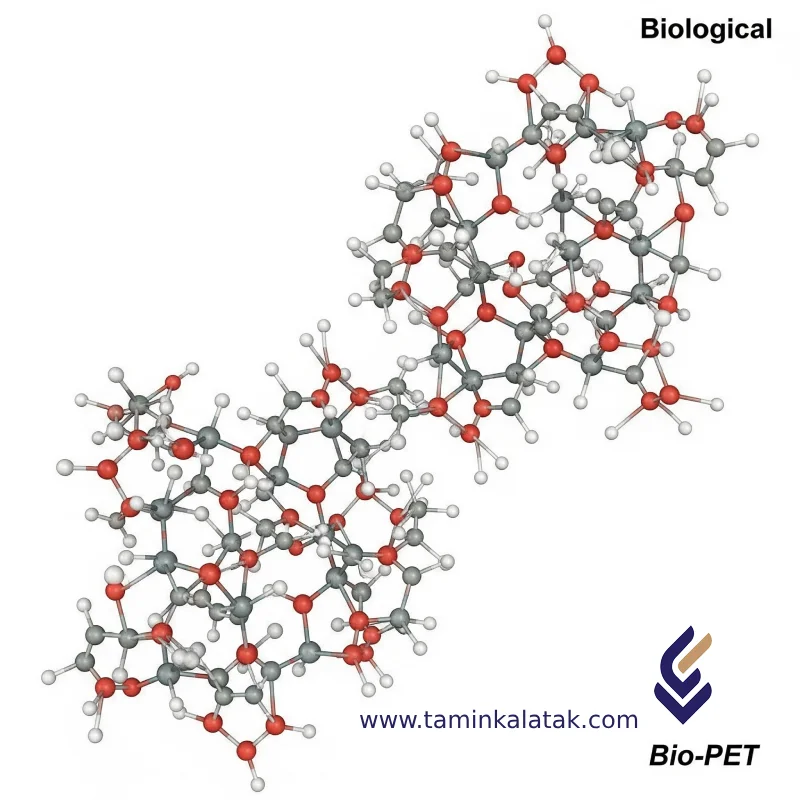Polymer
Polymers are made up of very large molecules made up of many repeating units called monomers, which ultimately form this long polymer chain
Auxiliaries & Additives
Biobased PolyEthylene Terephthalate (Bio-PET)
Bio-based Polyethylene Terephthalate (Bio-PET) is a type of thermoplastic polymer produced from renewable resources such as sugarcane molasses or corn starch. The chemical structure of Bio-PET is very similar to traditional PET, with the difference being that in Bio-PET, some or all of its ethylene glycol component is derived from biological sources. This material features a linear chain structure with repeating ethylene terephthalate units, which results in outstanding mechanical and thermal properties.
Features of Bio-based Polyethylene Terephthalate
- High thermal resistance
- Good optical clarity
- Desirable tensile strength and impact resistance
- Recyclable within the existing PET system
- Chemical resistance to oils, fats, and weak solvents
- Dimensional stability over time
Applications of Bio-based Polyethylene Terephthalate
- Food Packaging: Water bottles, carbonated beverage bottles, food containers
- Pharmaceutical and Personal Care Packaging
- Synthetic Fibers: For apparel, carpets, and industrial textiles
- Lightweight Engineering Applications: Such as automotive and electronic components
- Production of Transparent Packaging Films: With high printability
Disadvantages of Bio-based Polyethylene Terephthalate
- Higher production cost compared to traditional PET
- Dependency on agricultural resources for raw material supply
- Not widely available in some markets
- Low biodegradability in the natural environment (similar to conventional PET)
- Requires property enhancements for certain specialized industrial applications
Advantages of Bio-based Polyethylene Terephthalate
- Produced from renewable resources (reducing dependency on fossil fuels)
- Reduced greenhouse gas emissions during the production process
- Compatible with traditional PET recycling processes
- Suitable for food contact (approved by the FDA and EFSA)
- Improves brand image for environmentally conscious companies
Applications
(Bio-PET)
| Products | Grid | Melt Flow Index (MFI) (g/10min) | Density (g/cm³) | Process method | Applications |
|---|---|---|---|---|---|
| Bio-PET for beverage bottles | Bio-PET 30 | 65,00 | 138,00 | Blow molding | Bottled water, soda, carbonated drinks |
| Bio-PET for food packaging | Bio-PET F85 | 1,00 | 137,00 | Thermoforming | Food packaging containers, trays, lids |
| Bio-PET for textile fibers | Bio-PET T100 | 25,00 | 136,00 | (Melt Spinning) | Fibers for clothing, carpets, industrial textiles |
| Reinforced Industrial Bio-PET | Bio-PET G90 | 12,00 | 139,00 | Injection molding | Auto parts, home appliances, electronic enclosures |
| Bio-PET film with high transparency | Bio-PET F30 | 12,00 | 138,00 | Film extrusion | Packaging film, high printability, lamination |







